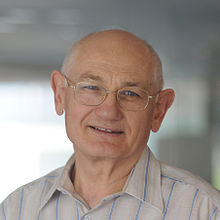Mordehai Milgrom | |
|---|---|
 | |
| Born | 1946 |
| Nationality | Israeli |
| Alma mater | Hebrew University Weizmann Institute |
| Known for | Modified Newtonian dynamics |
| Scientific career | |
| Fields | Astrophysics |
| Institutions | Weizmann Institute |
Mordehai "Moti" Milgrom is an Israeli physicist and professor in the department of Particle Physics and Astrophysics at the Weizmann Institute in Rehovot, Israel.